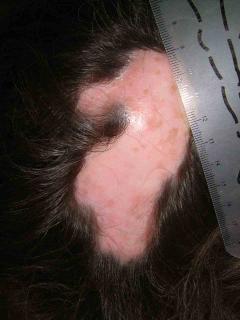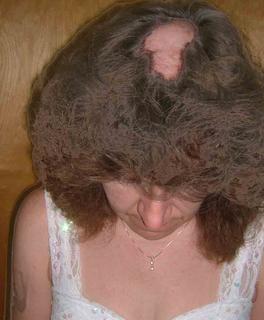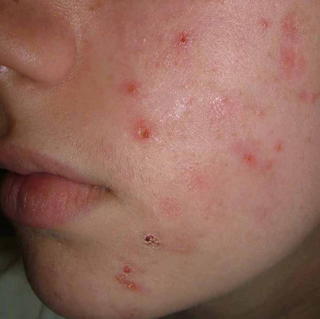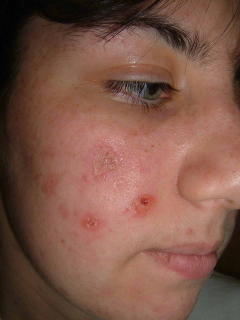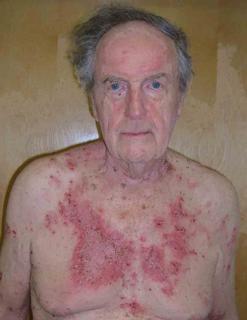

This 84 yo man was seen around weeks ago with an erosive bullous process on torso, head and neck of 4 months duration. He was on no meds by mouth and in good general health.
My initial impression was pemphigus vulgaris vs. impetigo. The skin culture showed many coag + staph, and the bx showed an acantholytic bulla. The DIF was positive for intracellular IgG.
He was treated with dicloxacillin 250 mg qid and prednisone 20 mg tid.
He cleared quickly. At present he is on 30 mg per day of prednisone and tapering by 5 mg every two weeks. He's had no new lesions since therapy was initiated and his itch has disappeared.
Questions:
1) Value of adjuvent therapy? I am thinking of starting in a benign manner with minocycline/
2) Should I try to get on alt. day steroid first?
3) Any suggestions?
Follow-up (August 6, 2005) The patient continues to do well. He is now on Prednisone 20 mg per day. No symptoms and no new lesions. His prednisoe will be dropped by 5 mq every 10 days until 10 mg per day - then we will convert to alt day therapy. I may add minocycline 100 mg bid.
